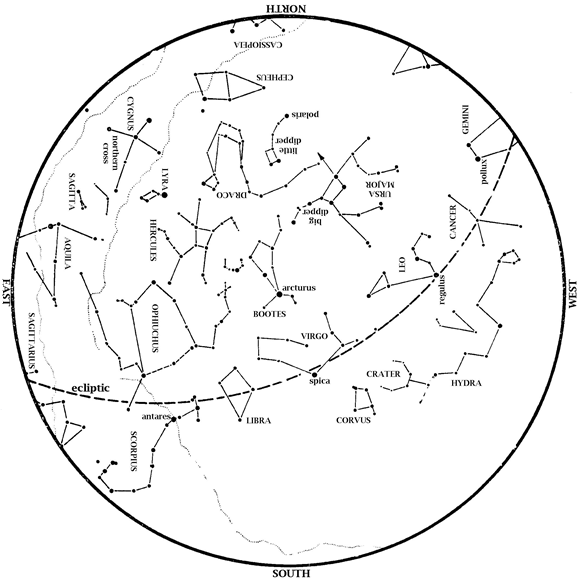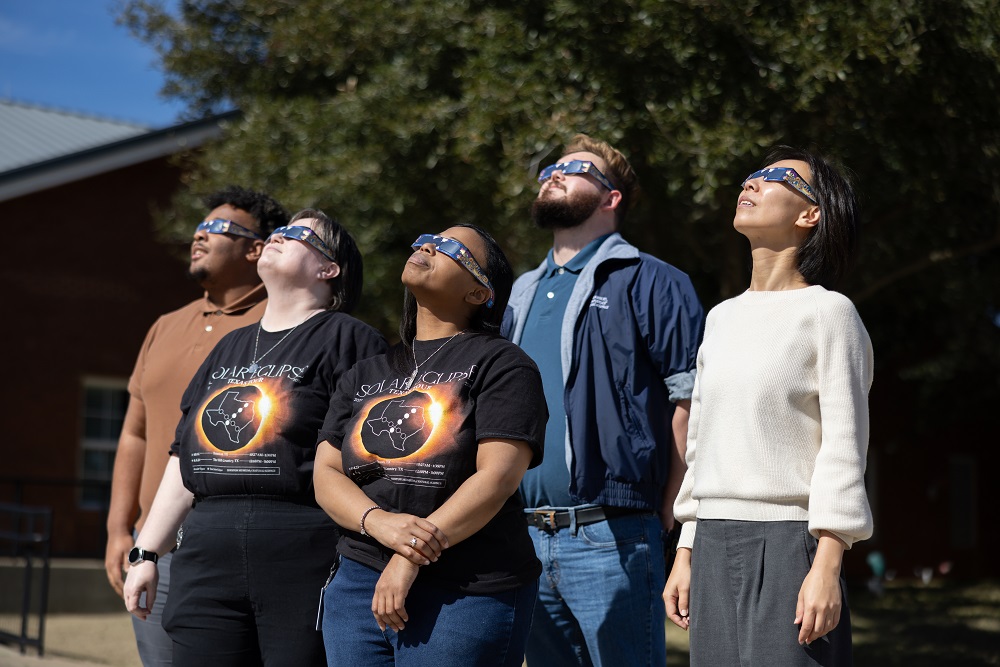Editor’s Note: We are looking up as HMNS Astronomer James Wooten explains the sky happenings for the month of September, including a newly discovered comet and the fall equinox.
Saturn is now well placed for observing in the early evening. Face southeast at dusk to observe it.
Jupiter is in the morning sky this month. Look very high in the southwest as the day breaks.
Venus has entered the morning sky. Look for it in the east at dawn this month.
Mars is lost in the Sun’s glare and out of sight for the rest of 2023.
The Summer Triangle is high overhead at dusk. This consists of Deneb, Vega, and Altair, the brightest stars in Cygnus, Lyra, and Aquila respectively. Scorpius, the Scorpion, is in the southwest, with the ‘teapot’ of Sagittarius to his left. When you face between these two constellations, you face the direction of the galactic center, which all stars in the Milky Way orbit. From the Big Dipper’s handle, ‘arc to Arcturus’ in the west. The Great Square of Pegasus rises in the east, heralding the coming autumn.
If you are far enough from bright city lights, you might look for the Milky Way band. This band is brightest near the galactic center and extends from there right through the Summer Triangle. In fact, every star we ever see in the sky with the naked eye is in our Milky Way. Indeed, our galaxy is so big that only stars relatively close to us appear as distinct stars; the rest of our galaxy blurs out and appears as the Milky Way band across our sky. For example, Deneb is about 1600 light years away, which is quite far. The entire Milky Way, however, is 100,000 light-years across, making Deneb one of our relative ‘neighbors’. Thus, we see our Milky Way as a blur in the background with stars like Deneb (and Vega, Altair, Deneb, etc.) in the foreground.

The Summer Triangle is overhead. This consists of the brightest stars in Cygnus, Lyra, and Aquila. Scorpius, the Scorpion, is in the southwest, with the ‘teapot’ of Sagittarius to his left. Saturn is in the southeast in Aquarius. From the Big Dipper’s handle, ‘arc to Arcturus’ in the west. The Great Square of Pegasus is high in the east, heralding autumn. Jupiter rises in the east by 9 p.m. on the 30th.
Moon Phases in September 2023
Last Quarter Sept. 6, 5:21 p.m.
New Sept. 14, 8:40 p.m.
1st Quarter Sept. 22, 2:32 p.m.
Full Sept. 29, 4:57 a.m.
A naked-eye comet may grace our morning skies this month! Comet Nishimura, discovered less than a month ago, now rises just before dawn. Some view charts are on this page.
As of now, astronomers predict that Nishimura will attain naked-eye brightness within a week. Comets are unpredictable, however, so we just have to wait and see. Nishimura comes closest to Earth on September 12 and then closest to the Sun on September 17. By these dates, though, it will generally be in the same direction as the Sun and therefore harder to see.
At 1:50 a.m. on Saturday, September 23, 2023, the Sun is directly overhead as seen from the equator, shifting southwards. This is therefore the autumnal (fall) equinox for us in the Northern Hemisphere. You have probably already noticed that the Sun sets earlier and earlier each night during August. After the equinox, night becomes longer than day for us. Below the equator, on the other hand, days have been lengthening, and day becomes longer than night as of this equinox. For folks down there, this is the vernal (spring) equinox.
Our George Observatory is now open every Saturday night for observation! Purchase tickets in advance on our website.
Clear Skies!
Missed out on August’s Sky Happenings? Take a look!






